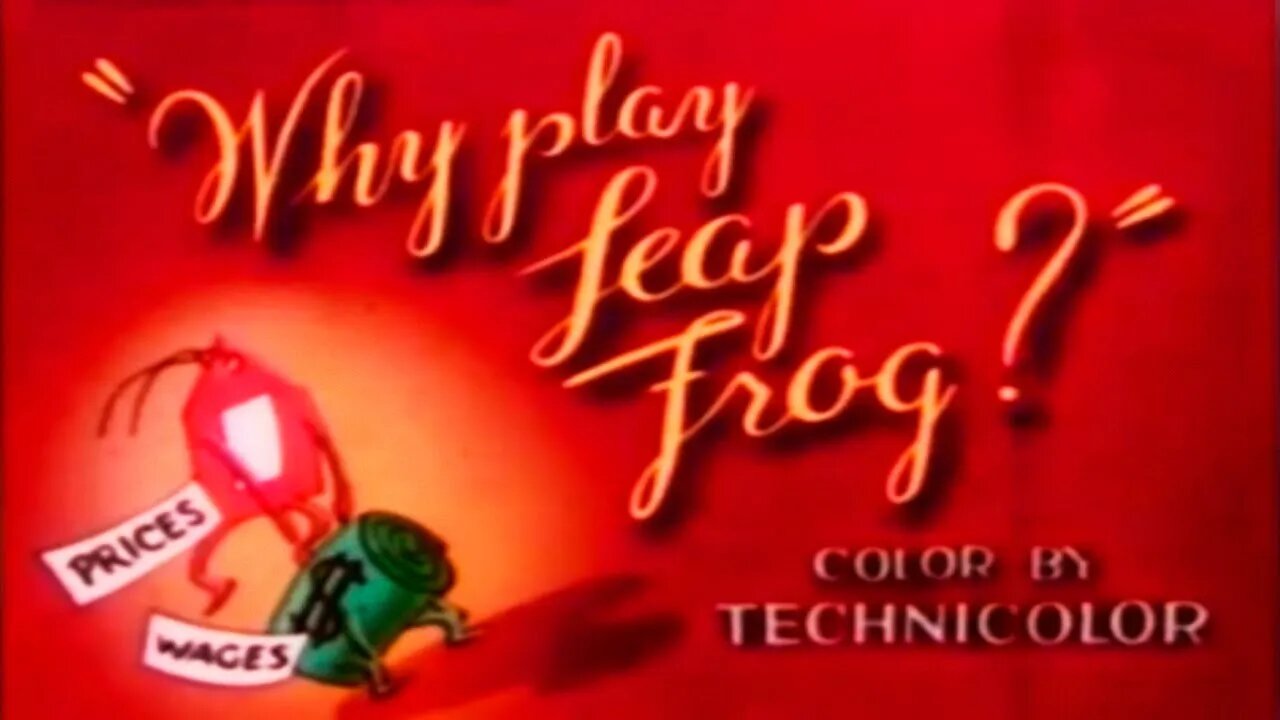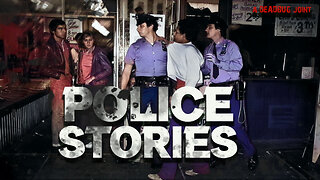Premium Only Content

Why Play Leap Frog? (1949)
Sponsor: Harding College
Production: John Sutherland Productions, American Studies Institute at Harding College
Animation Studio: John Sutherland Productions
Distributed by: Metro-Goldwyn-Mayer
Cartoon Characters: Joe, Workers.
Awards: Winner, Freedoms Foundation Award, 1951.
Originally Released in 1950 (Estimate).
Originally Released Theatrically.
Running Time: 9:30 minutes.
TechniColor
Joe, who paints doll faces at the Dilly Dolly doll factory, is down in the mouth. He can't make ends meet. An unexpected wage raise brightens his spirits. Now he can buy his young daughter a birthday present. He decides upon, not surprisingly, a doll. At the toy shop, he flies into a rage. The doll costs two dollars. He knows there is only ten cents worth of material in the thing. The store manager tries to explain that because Joe's company increased the cost of its latest shipment, his store had to increase the price of the doll. Joe will have none of it. It's up to the narrator to talk some sense into Joe and give him an economics lesson. Soon Joe understands such things as labor costs and profits. Suddenly he hits upon an idea that improves productivity at his company, drives down costs, and thus improves the economy. Now, a Dilly Dolly doll is only one dollar; and Joe's wage raise really means something.
Inflation is explained in this Cold War-era cartoon aimed at convincing workers that increased productivity brings about greater purchasing power. What plays leapfrog are wages and prices in a capitalist economy, as is explained to the cartoon's hero, an employee at the Dilly Doll Company who gets upset after getting a raise and then finding out that the price has gone up on his own company's product. The explanation given for inflation is that labor costs so darn much. Essentially, the doll's higher price is directly attributed to worker Joe's raise. But there's a way out in the form of technology: advances in manufacturing technology increase productivity, and this keeps wages ahead of prices.
© John Sutherland Productions
-
 2:16:41
2:16:41
Tundra Tactical
7 hours ago $10.55 earnedThe Pew Pew Jew On Tundra Nation Live : The Worlds Okayest Gun Live Stream
70.4K5 -
 7:36
7:36
Colion Noir
11 hours agoDonald Trump Issues Executive Order To Protect The Second Amendment
83.4K60 -
 13:39
13:39
Exploring With Nug
16 hours ago $5.75 earnedCars Found Underwater While Searching Georgia Woman!
70.5K2 -
 56:50
56:50
IsaacButterfield
1 day ago $8.14 earnedSam Kerr Goes To Jail | Americas Worst Law | Teacher Of The Year
82.5K18 -
 6:14
6:14
Silver Dragons
1 day agoAmerican Silver Eagle Coins - Dealer Reveals Everything You NEED to Know
77.4K9 -
 19:18
19:18
Neil McCoy-Ward
1 day ago🚨 The USAID Scandal Goes Way Deeper Than We Could Have Imagined!
72.5K37 -
 14:29
14:29
Bearing
18 hours agoTHE BIG BALLS EFFECT - Democrats MELT DOWN Over DOGE & USAID 🔥
66.4K85 -
 11:35
11:35
China Uncensored
1 day agoChina Nuclear Fusion Breakthrough Shocks The World
79.9K53 -
 50:19
50:19
AlaskanBallistics
1 day ago $2.73 earnedI Love This Gun Podcast Episode 6
56.1K2 -
 16:35
16:35
DEADBUGsays
1 day agoPolice Stories Ep4
37.8K